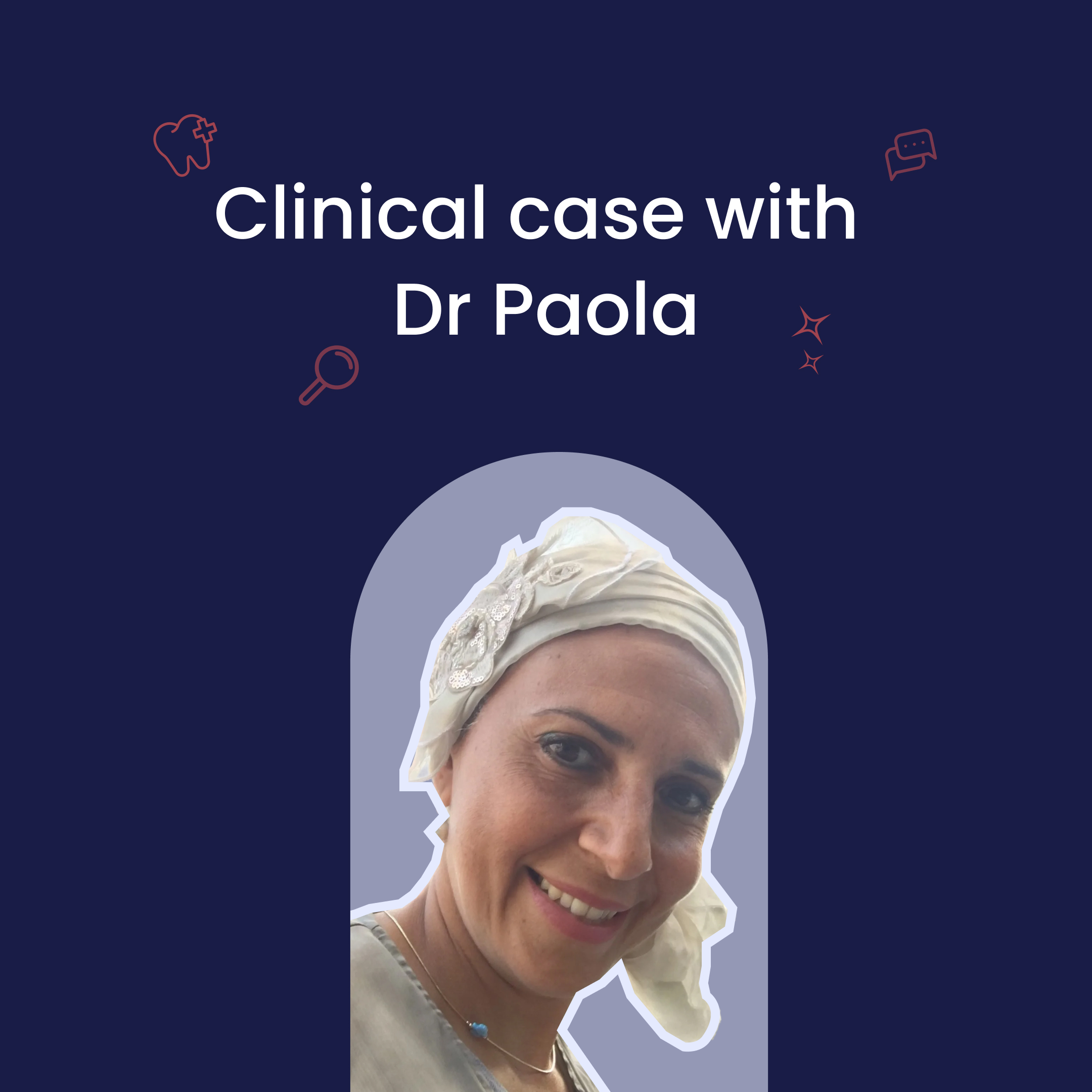
65% of French people have already refused a treatment plan proposed by their dentist. And the financial issue is not always at fault: often, it's because they don't understand what's at stake for their oral health. To accept treatment, a patient needs to understand why it is necessary, how it will solve their problem and why you are the ideal health care professional to provide this service. Discover our tips for optimizing your patients' experience in your office, and ultimately getting them to adhere to your treatment plans.
Step 1: Welcome and build confidence
From the very first contact, your patient should feel at ease. If the appointment is made by telephone, your assistant 's welcome should be as respectful and reassuring as possible. All necessary practical information (how to get to your practice or park your car, for example) should be provided.
On the day, when the patient arrives, the welcome must, once again, be adapted. Your patient should be made to feel comfortable. At the time of the appointment, it is best to greet the patient personally and take them to the treatment room to begin the pre-clinical interview. If your assistant is the one greeting the patient for an immediate panoramic x-ray, she should explain to your patient why she is doing this.
The first few minutes of the pre-clinical interview should enable you to find out not only why the patient is coming, but also what his or her state of mind is. To do this, decode non-verbal language and adapt your posture and speech to your interlocutor. If your patient is clearly nervous, be particularly reassuring.
Step 2: Optimize chair-based pedagogy
Optimizing your patient's acceptance of the treatment plan you propose continues during the clinical examination, with an absolute avoidance of derogatory comments about his or her teeth. But don't remain silent. Share your findings with your patient, without bombarding him with details or medical jargon he doesn't understand.
Explain the steps of your examination and, if applicable, the strengths and weaknesses of the patient's oral environment. Adapt your language level to your patient's assumed level of understanding, without oversimplifying your explanations. This is a fundamental task.
Do you use high-tech equipment? Explain why, and why it's good for both you and him.
Step 3: Imaging your diagnosis
This step is of course crucial: after the clinical examination, the study of panoramic X-rays and your patient's file, you will be able to establish your diagnosis and propose your treatment plan. Our advice: avoid presenting it in an abrupt manner.
Start by taking the time to re-explain the problems you've encountered. Bear in mind that a picture is worth a thousand words! Of course, you can rely on panoramic X-rays, but these are often difficult to read and of course impossible for a layman to interpret. A tool such as the software developed by Allisone offers you a practical visual communication tool for explaining in detail the various elements present on a dental X-ray. In fact, the solution enables you to visually highlight your patient's problems and illustrations to help everyone understand the various treatments. The comprehensive yet simplified representation of your patient's ailments and dental particularities makes your diagnosis accessible and understandable, and naturally and significantly increases your patient's confidence in your analysis - and therefore your treatment plan.
Step 4: Detailing the treatment plan
Once the diagnosis has been easily presented and perfectly understood by your patient, it remains to finalize the construction of your treatment plan and to communicate it to him. Once again, a tool such as the one proposed by Allisone comes to your aid by giving you the possibility to quickly and intuitively build the treatment plan of your choice.
From a pedagogical point of view, you can, during the presentation of your treatment plan, insist on the impact of the lesions observed on the medium and long term oral health, but also on the general health and possibly on their psychological impact. Allisone provides you with pedagogical sheets to explain the different elements in a pictorial way to allow your patients to project themselves in the treatment plan that you propose to them
In general, it is advisable to avoid the use of "I" as much as possible and to prefer "we" throughout the consultation and the presentation: this will allow your patient to feel more involved in his or her treatment.
Then present the objective and the course of the care, specifying, if necessary, the schedule that you envisage, explaining, if necessary, why the care must be divided. The educational sheets ofAllisone allow your patients to understand concretely the care to be carried out and to understand why it must be sequenced.
As a reminder, your quote must be in writing and include:
- description of the proposed treatment or procedures (nature, location, materials used);
- the quotation of the procedures according to the nomenclature;
- the total amount of the fees ;
- the basis of reimbursement for the compulsory health insurance ;
- possibly the distribution of the cost of the prosthesis and the structural and operating expenses;
- possibly the geographical location of the prosthetic laboratory in charge of your work;
- the basket of care to which each procedure belongs (100% Health basket, "controlled rates" basket and "free rates" basket);
- a "therapeutic alternative information" section for each procedure with a remaining charge.
If you are undergoing extensive care that involves high fees, offering a financial agreement will help ensure that your treatment plan is accepted.
Finally, take the time to answer any questions or objections your patient may have: for example, you may have to explain again the evolution of the lesions, the additional care that their evolution implies and the stakes for his health.
Step 5: Follow up after the consultation
Before walking your patient out of your office, offer to send them an email summary of your consultation: this task is certainly time-consuming, but it is important to allow your patient to make the right decision with a clear head, if he or she has not made it immediately.
Another advantage is that you can share all the information with your assistant who is likely to talk to your patient and answer their questions.
Add your estimate and invite your patient to send it to his or her complementary health insurance company, in order to know the amount of the reimbursement. Also encourage them to contact you again if they have any questions about your treatment proposal. The fact that you are once again listening to them and being available to them will strengthen their confidence in your involvement in their health.
In the event that it is your assistant who is contacted by your patient, it may be useful to share all the information with her: the assistants using Allisone can access the patient files containing the elements highlighted on the X-ray, but also the mandatory report, the treatment plan per tooth and the educational sheets in order to provide a complete, precise and perfectly understandable answer.
Finally, offer to set up the next appointment(s).
By focusing on optimizing adherence to your treatment plans, you will not only improve the health of your patients and increase your revenues, but also save time and money in your daily work by implementing rigorous organization, good communication and the use of advanced technologies.
Learn more about Allisone.
Articles en lien
Lorem ipsum dolor sit amet, consectetur adipiscing elit.

L’intelligence artificielle au cœur des soins dentaires : témoignage du Dr Paola

Mieux faire accepter les plans de traitement : 4 leviers qui fonctionnent vraiment






